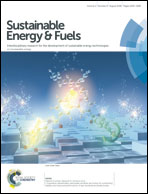An optimal multistage charge strategy for commercial lithium ion batteries
Abstract
Herein, an optimal multistage charge strategy for commercial lithium ion batteries is proposed to enhance the performance of electric vehicles and hybrid electric vehicles. The strategy includes four stages of constant current charge and short constant voltage (CV) charge time. Equivalent circuit model (ECM) and capacity fade analysis are used to search for optimal charge profiles. The results indicate that the parameters of ECM change with SOC and over battery lifetime. The charge time simulation based on ECM is still accurate enough to obtain fast charging after hundreds of cycles. The charge capacity depends on the final stage charge rate and CV charge time. The maximum temperature during charging and the temperature at the end of charging, which are related to the first and fourth stage charge rates, respectively, have different effects on the capacity fading. The influence of the maximum temperature on the capacity fading changes over the battery lifetime, which may be because the capacity fading mechanisms of the battery change over the battery lifetime. Thus, the charge profiles should be suitable at different periods. CV charging prolongs the cycle life when its time is suitable value. Considering all the results and practicality, optimal values of charge can be acquired to obtain fast charging, less charge capacity loss and long cycle life.

- This article is part of the themed collection: 2018 Sustainable Energy and Fuels HOT Articles


 Please wait while we load your content...
Please wait while we load your content...